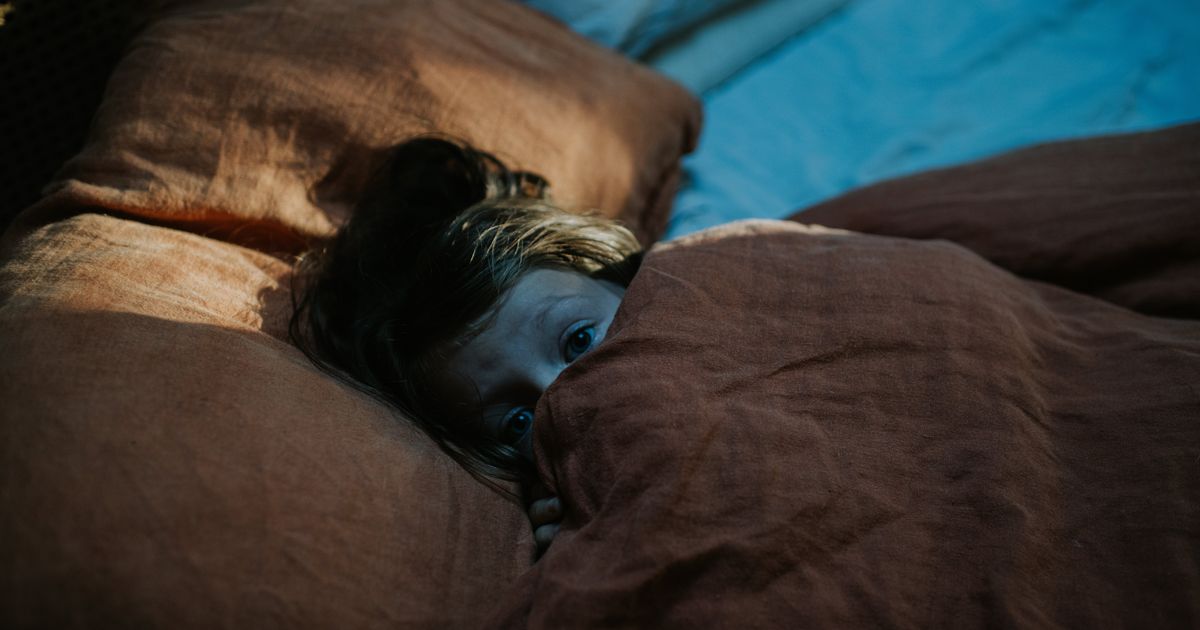News
This Misunderstood Sleep Disorder Is Terrifying To Parents. Here’s What You Need To Know.
You wake in the middle of the night to the sound of your child’s screams. You run into their room, where you find them thrashing about their bed as though battling an invisible monster. You call their name, but they don’t respond.
This situation sounds, and feels, like a parent’s nightmare — or perhaps a scene from “Stranger Things.” In fact, it’s known as a night terror, and, while disturbing, it’s not an uncommon occurrence in children, nor is it a harmful one.
What are night terrors?
Think of a night terror as a nightmare taken to the next level to include sound and motion. It can be frightening to observe, as the person appears to be in great distress.
“A child having a night terror might sit up in bed. They might act very afraid and upset. They may even be shouting or screaming or kind of flail and thrash about,” Tyanna C. Snider, a pediatric psychologist at Nationwide Children’s Hospital in Ohio, told HuffPost.
“You might also see some more fear or panic symptoms like sweating, rapid heart rate, faster breathing,” she added. In spite of all this, the child remains asleep.
“Typically, the child will not even respond if someone tries to help,” Dr. Jonathan Miller, chief of pediatric primary care at Nemours hospital in Delaware, told HuffPost.
“They can be very difficult, and honestly, almost nearly impossible to console,” Snider said.
The good news is that night terrors end without any intervention. “After a few minutes, or sometimes longer, the child calms down and goes back to sleep,” Miller said.
Bizarrely, and in contrast to a nightmare, the child will have no memory of their night terror the next morning — though parents often need some time to recover from the scare!
While adults can get night terrors, they are seen more frequently in children under the age of 13, Snider said. Some children only have a night terror once, while in others they are recurring, but most kids won’t have them once they reach adolescence.
“Night terrors in adults are often related to underlying anxiety or post-traumatic stress disorder,” Miller said. He added that adults are also more likely to be injured during a night terror when they move around or get out of bed.
In children, night terrors are not uncommon. Estimates of their prevalence range widely, from 1-30%. A 2022 study involving 324 children who were followed from ages 1-3 found that the incidence was 16.7–20.5%.
Sleepwalking, sleep talking and night terrors are all considered sleep disorders, or parasomnia. While a person may walk or talk during a night terror, walking or talking during sleep doesn’t necessarily mean that a night terror is taking place.
“Sleepwalking may be associated with night terrors, but it is not a night terror itself,” Miller said. Interestingly, while people are often able to recall their nightmares, they usually have no recollection of night terrors, sleepwalking or sleep talking.
Usually, Snider said, night terrors occur “within that first third of the night, because they’re happening during non-REM sleep.”
How should I handle a night terror?
If you believe your child is having a night terror, there is little to do other than wait for it to pass. Miller suggests that you:
- Sit quietly near your child.
- Make sure they don’t get hurt by thrashing or running around.
- Wait patiently until your child goes back to sleep, usually within a few minutes.
While it is hard to see your child in this strange type of distress, Snider suggested that you “keep in mind that the child won’t have memory of this night terror, and that they’re not in any real danger.”
You may have heard that it is dangerous to awaken a person having a night terror. While it won’t physically harm the person, experts do recommend against it, as it can be disorienting for the child.
“Don’t try to wake your child,” Miller advised. “This usually doesn’t work, and kids who do wake up are likely to be confused and upset.”
It’s worth mentioning any night terrors your child has to your pediatrician, as they are sometimes associated with obstructive sleep apnea or reflux, both medical conditions that can be treated. If your child’s night terrors are frequent, you may be advised to consult a sleep specialist.
Is there any treatment for night terrors?
There is no medication or therapy to treat night terrors. (However, if the person having night terrors is diagnosed with PTSD or anxiety, there are various treatments for those conditions.)
“The best treatment is prevention,” Snider explained. Children who aren’t getting enough sleep are more prone to night terrors, she said, as are children experiencing stress.
Miller said that a person susceptible to night terrors may be triggered by:
- Insufficient sleep
- Illness
- Certain medications
- A change in sleep environment (such as sleeping in a new place or away from home)
- Anxiety or stress
- Caffeine
- Disturbances in sleep, such as obstructive sleep apnea and reflux.
If your child is having frequent night terrors, you may be able to find a pattern in terms of when they occur — generally during the first few hours of your child’s sleep.
“Sometimes you can identify and kind of pinpoint a time frame, and waking your child up 10 to 15 minutes before [the night terror is likely to happen] can sometimes prevent them from happening,” Snider said.
If your child does have a night terror, it may help to know that the only one to remember it will be you.
Read more

